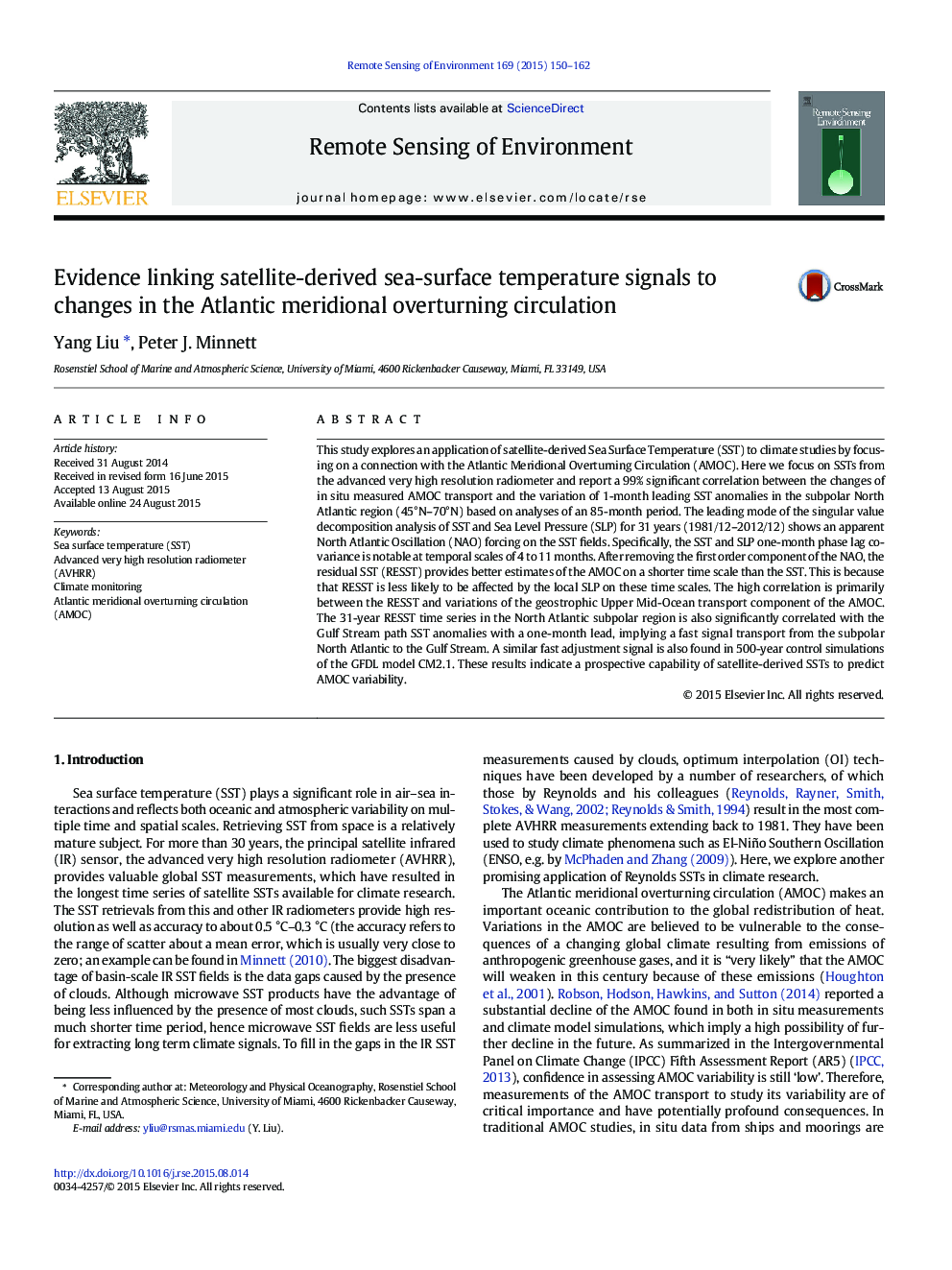| Article ID | Journal | Published Year | Pages | File Type |
|---|---|---|---|---|
| 6345805 | Remote Sensing of Environment | 2015 | 13 Pages |
â¢AVHRR-based SSTs in representing changes in the AMOC are studied.â¢Subpolar residual SST and AMOC transport anomalies have a high correlation.â¢Transport anomaly signal most likely remains in 31-year SSTs in the Gulf Stream.â¢GFDL simulation shows fast propagating of correlation between RESST and AMOC.
This study explores an application of satellite-derived Sea Surface Temperature (SST) to climate studies by focusing on a connection with the Atlantic Meridional Overturning Circulation (AMOC). Here we focus on SSTs from the advanced very high resolution radiometer and report a 99% significant correlation between the changes of in situ measured AMOC transport and the variation of 1-month leading SST anomalies in the subpolar North Atlantic region (45°N-70°N) based on analyses of an 85-month period. The leading mode of the singular value decomposition analysis of SST and Sea Level Pressure (SLP) for 31 years (1981/12-2012/12) shows an apparent North Atlantic Oscillation (NAO) forcing on the SST fields. Specifically, the SST and SLP one-month phase lag covariance is notable at temporal scales of 4 to 11 months. After removing the first order component of the NAO, the residual SST (RESST) provides better estimates of the AMOC on a shorter time scale than the SST. This is because that RESST is less likely to be affected by the local SLP on these time scales. The high correlation is primarily between the RESST and variations of the geostrophic Upper Mid-Ocean transport component of the AMOC. The 31-year RESST time series in the North Atlantic subpolar region is also significantly correlated with the Gulf Stream path SST anomalies with a one-month lead, implying a fast signal transport from the subpolar North Atlantic to the Gulf Stream. A similar fast adjustment signal is also found in 500-year control simulations of the GFDL model CM2.1. These results indicate a prospective capability of satellite-derived SSTs to predict AMOC variability.
